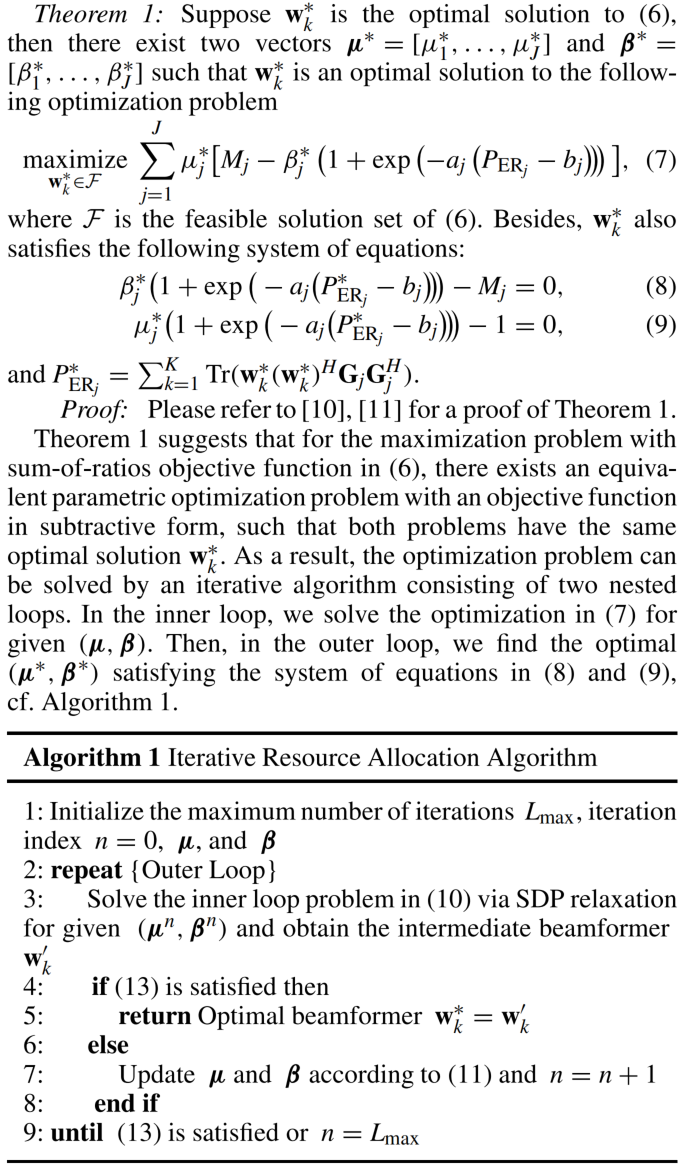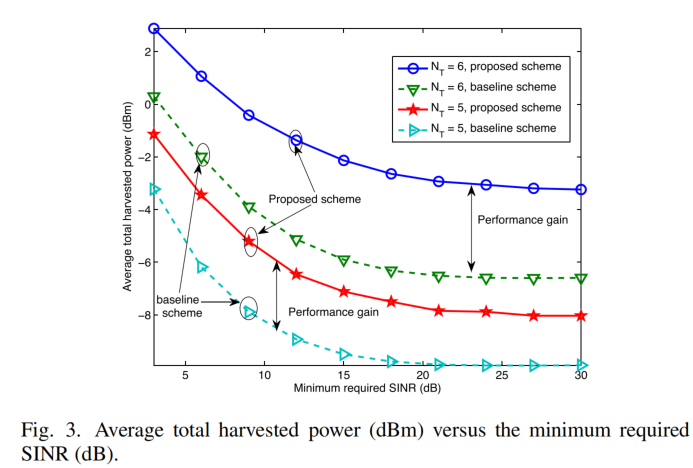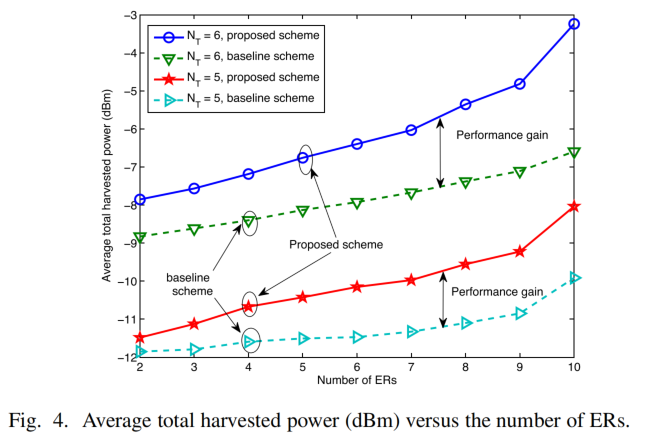无线能量传输-能量接收机的非线性接收模型(一)
Date: 2022.04.22 17:07
Author: Joffrey LC
Practical Non-Linear Energy Harvesting Model and Resource Allocation for SWIPT Systems. Elena Boshkovska et.al. IEEE Communications Letters, Dec. 2015 (pdf) (Citations 551)
Quick Overview
- 提出Energy Harvesting Model 是 non-linear的,并给出模型(需要根据具体测量值,拟合得到具体参数)
- 给出一种双重循环的快速解决方案(这部分简单看了一下)
如果噪声是矩阵形式,应该表示为,其中表示噪声的功率
主要内容
Energy Harvesting Model
Proposed a Non- Linear EH model based on the logistic (sigmoid) function:
其中,代表-th ER 接受到的总能量;代表logistic function with respect to the receive RF power 。其他参数例如$$a_j,b_j,M_j$$都是通过对实际电路模型的测量值进行拟合得到
并且由于并不影响的设计,所以一般采用表示接收到的能量。有典型值[1]:
双循环解法
原始问题建模:

C1:功率约束
C2:SINR约束
Proposal 流程

另外有一个重要理论(没有证明):

Result

- Harvested Energy 随着Minimum required SINR 增大而减小
- Harvested Energy 随着单个ER的天线数量的增大而增大:因为更多的天线带来更高的自由度,会得到更高效的资源分配方案

- Harvested Energy 随着ERs数量增大而增大,而且性能增益(Performance Gap between Non-Linear Model with Linear Model)增大:因为ERs数量增大,Baseline(Performance with Linear Model)的失配(mismatch)更严重
- T. Le, K. Mayaram and T. Fiez, “Efficient Far-Field Radio Frequency Energy Harvesting for Passively Powered Sensor Networks,” in IEEE Journal of Solid-State Circuits, vol. 43, no. 5, pp. 1287-1302, May 2008, doi: 10.1109/JSSC.2008.920318. ↩ ↩
本文作者: Joffrey-Luo Cheng
本文链接: http://lcjoffrey.top/2022/04/25/EH-nonlinear-model1/
版权声明: 本博客所有文章除特别声明外,均采用 CC BY-SA 4.0 协议 ,转载请注明出处!